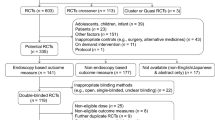Abstract
Background and aim: Gastro-oesophageal reflux disease is a common medical problem that places a significant financial burden on outpatient pharmaceutical expenditure. A substantial proportion of this expenditure can be attributed to the use of proton pump inhibitors (PPIs). The aim of this analysis was to evaluate the cost-effectiveness of PPIs currently licensed in Italy in the acute treatment of reflux oesophagitis.
Methods: A decision analysis model that simulated the sequential management of reflux oesophagitis over the course of 8 weeks was constructed. Healing rates were derived from a published meta-analysis of PPIs for reflux oesophagitis. Costs of PPIs were based on retail prices in Italy, endoscopies and specialist (outpatient) visits were costed on the basis of public tariffs, and opportunity costs were calculated for general practitioner visits. The clinical effectiveness of a PPI was measured in terms of the proportion of patients healed at 8 weeks. An incremental cost-effectiveness analysis was performed, using omeprazole, the recognised ‘gold standard’ PPI in Italy, as the common comparator. The perspective of the analysis was the Italian National Health System (NHS). A sensitivity analysis was conducted in which the key parameters in the model were varied according to a Monte Carlo simulation of 1000 patients.
Results: Esomeprazole 40 mg/day was a dominant treatment option compared with omeprazole 20 mg/day (88.8% patients healed vs 82.2%, respectively; total treatment cost €164.85 vs €169.56, respectively (year of costing, 2002). Furthermore, on the basis of the 95% CIs generated by the Monte Carlo simulation, esomeprazole 40 mg/day appears to be more cost-effective than both lansoprazole 30 mg/day and pantoprazole 40 mg/day.
Conclusions: Esomeprazole 40 mg/day can be considered a cost-effective treatment option for the acute treatment of reflux oesophagitis in Italy.













Similar content being viewed by others
References
Locke III GR, Talley NJ, Fett SL, et al. Prevalence and clinical spectrum of gastroesophageal reflux: a population-based study in Olmsted County, Minnesota. Gastroenterology 1997; 112: 1448–56
Corder AP, Jones RH, Sadler GH, et al. Heartburn, oesophagitis and Barrett’s oesophagus in self-medicating patients in general practice. Br J Clin Pract 1996; 50: 245–8
Johnsson F, Joelsson B, Gudmundsson K, et al. Symptoms and endoscopic findings in the diagnosis of gastroesophageal reflux disease. Scand J Gastroenterol 1987; 22: 714–8
Jones RH. Gastro-oesophageal reflux disease in primary care in Europe: clinical presentation and endoscopic findings. Eur J Gen Pract 1995; 1: 149–54
Venables TL, Newland RD, Patel AC, et al. Omeprazole 10 milligrams once daily, omeprazole 20 milligrams once daily, or ranitidine 150 milligrams twice daily, evaluated as initial therapy for the relief of symptoms of gastro-oesophageal reflux disease in general practice. Scand J Gastroenterol 1997; 32: 965–73
Wiklund I, Bardhan KD, Muller-Lissner S, et al. Quality of life during acute and intermittent treatment of gastro-oesophageal reflux disease with omeprazole compared with ranitidine: results from a multicentre clinical trial. The European Study Group. Ital J Gastroenterol Hepatol 1998; 30: 19–27
Wahlqvist P. Symptoms of gastroesophageal reflux disease, perceived productivity and health-related quality of life. Am J Gastroenterol 2001; 96,Suppl. 8: S57–61
Henke CJ, Levin TR, Henning JM, et al. Work loss costs due to peptic ulcer disease and gastroesophageal reflux disease in a health maintenance organisation. Am J Gastroenterol 2000; 95: 788–92
Dent J, Jones R, Kahrilas P, et al. Management of gastro-oesophageal reflux disease in general practice. BMJ 2001; 322: 344–7
Kroes RM, Numans ME, Jones RH, et al. GERD in primary care: comparison and development of European guidelines on gastroesophageal reflux disease. Eur J Gen Pract 1999; 5: 88–97
Vigneri S, Termini R, Leandro G, et al. A comparison of five maintenance therapies for reflux esophagitis. N Engl J Med 1995; 333: 1106–10
Moayyedi P, Delaney B, Katza D, et al. Gastro-oesophageal reflux disease. Clin Evid 2001; 5: 311–23
Röhss K, Lind T, Wilder-Smith CH. Esomeprazole 40mg provides more effective intragastric acid control than lansoprazole 30mg, omeprazole 20mg, pantoprazole 40mg and rabeprazole 20mg in patients with gastro-oesophageal reflux symptoms. Eur J Clin Pharmacol 2004; 60: 531–9
Department of Health. Prescription cost analysis [online]. London: NHS, 1997. Available from URL: http://www.nhs.uk/default.asp [Accessed 2002 Dec 15]
National Institute for Clinical Excellence (NICE). Guidance on the use of proton pump inhibitors in the treatment of dyspepsia. Technology Appraisal Guidance N. 7. London: National Institute for Clinical Excellence, 2000
IMS -II Mercato Farmaceutico -Milano, 2001
ASSR, Agenzia per i Servizi Sanitari Regionali. Indicatori sull’evoluzione della spesa sanitaria dal 1995 al 2001. Monitor, Anno II, numero 3, gennaio-febbraio 2003
Edwards SJ, Lind T, Lundell L. Systematic review of proton pump inhibitors for the acute treatment of reflux oesophagitis. Aliment Pharmacol Ther 2001; 15: 1729–36
Plumb JM, Edwards SJ. Cost-effectiveness analysis of proton pump inhibitors compared to omeprazole in the healing of reflux oesophagitis. J Med Econ 2002; 5: 25–38
L’Informatore Farmaceutico, 2003 -OEMF, Milano, 2003
Ministero della Sanità — Prestazioni di assistenza specialistica ambulatoriale erogabili nell’ambito del Servizio Sanitario Nazionale e relative tariffe — Decreto Ministeriale 22 luglio 1996, Supplemento ordinario alla Gazzetta Ufficiale n. 216 del 14 settembre 1996
SPM -Servizio Prescrizioni Mediche -IMS, Milano, 2001
ISTAT -Annuario Statistico Italiano -Istituto Nazionale di Statistica, Roma, 2001
Wahlqvist P, Higgins A, Green J. Management of GORD in the UK: results of a survey. Eur J Intern Med 2001; 12: A273–4
Acknowledgements
Funding for this study was provided by AstraZeneca SpA, Italy. The authors acknowledge the valuable contribution made by J.M. Plumb, AstraZeneca UK Ltd, to the preparation of this article. The authors may have no potential conflicts of interest that are directly relevant to the contents of this article.
Author information
Authors and Affiliations
Corresponding author
Rights and permissions
About this article
Cite this article
Lucioni, C., Mazzi, S. & Rossi, C. Proton Pump Inhibitors in Acute Treatment of Reflux Oesophagitis. Clin. Drug Investig. 25, 325–336 (2005). https://doi.org/10.2165/00044011-200525050-00005
Published:
Issue Date:
DOI: https://doi.org/10.2165/00044011-200525050-00005




